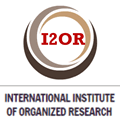Enfermedad de pequeños vasos en el sistema nervioso central
Resumen
Palabras clave
Referencias
Adams RD, Victor M, Ropper AH, editores. Principles of Neurology. New York: McGraw-Hill; 1997.
Pulsinelli WA. Cerebrovascular diseases. En: Goldman GH, editor. Cecil Textbook of Medicine. 21 ed. Philadelphia: Saunders; 2000. p. 2093-2115.
Kulkarni V, Bhagwat N, Hakim A, Kamath S, Soneji SL. Hypertension in the elderly. J Assoc Physicians India. 2001 Sep;49:873-6.
De Girolami U, Anthony DC, Frosch MP. The Central Nervous System. En: Cotran TD, editor. Robbins Pathologic Basis of Disease. 6ta. ed. Philadelphia: Saunders; 1999. p. 1293-1314.
Cupini LM, Pasqualetti P, Diomedi M, Vernieri F, Silvestrini M, Rizzato B, et al. Carotid artery intima-media thickness and lacunar versus nonlacunar infarcts. Stroke. 2002 Mar;33(3):689-94.
Reichart MD, Bogousslavsky J, Janzer RC. Early lacunar strokes complicating polyarteritis nodosa: thrombotic microangiopathy. Neurology. 2000 Feb 22;54(4):883-9.
Adams HP Jr, Bendixen BH, Kappelle LJ. Classification of subtypes of acute ischemic stroke. Definitions for use in a multicenter clinical trial. Stroke. 1993;24:35-41.
Tsuchiya H. Role of hypertension in stroke in the elderly. Hypertension. 1994 Jan;23(1 Suppl 1):I221-28.
Murat Sumer M, Erturk O. Ischemic stroke subtypes: risk factors, functional outcome and recurrence. Neurol Sci. 2002 Mar;22(6):449-54.
Nagai Y, Kitagawa K, Sakaguchi M. Significance of earlier carotid atherosclerosis for stroke subtypes. Stroke. 2001 Aug;32(8):1780-5.
Wardlaw JM, Dennis MS, Warlow CP, Sandercock PA. Imaging appearance of the symptomatic perforating artery in patients with lacunar infarction: occlusion or other vascular pathology? Ann Neurol. 2001 Aug;50(2):208-15.
Arboix A, Garcia-Eroles L, Massons J, Oliveres M, Targa C. Lacunar infarcts in patients aged 85 years and older. Acta Neurol Scand. 2000 Jan;101(1):25-9.
Tejada J, Martinez V, Fernandez F, Hernandez L, Balboa O, Martinez L, et al. Lacunar infarcts. A comparative study of risk factors and carotid stenosis. Rev Clin Esp. 1995 Mar;195(3):141-6.
Hayreh SS, Servais GE, Virdi PS. Retinal arteriolar changes in malignant arterial hypertension. Ophthalmologica. 1989,198:178-96.
Hayreh SS, Servais GE, Virdi PS, Marcus ML, Rojas P, Woolson RF. Fundus lesions in malignant hypertension. III. Arterial blood pressure, biochemical, and fundus changes. Ophthalmology. 1986;93:45-59.
Walsh JB. Hypertensive retinopathy. Description, classification and prognosis. Ophthalmology. 1982;89:1127-31.
Klein R, Klein BE, Moss SE, Wang Q. Hypertension and retinopathy, arteriolar narrowing, and arteriovenous nicking in a population. Arch Ophthalmol. 1994;112:92-8.
Sheie HG. Evaluation of ophthalmoscopic changes of hypertension and arteriolar sclerosis. Arch Ophthalmol. 1953;49:117-38.
Hayreh SS. Classification of hypertensive fundus changes and their order of appearance. Ophthalmologica. 1989;198:247-60.
Akman A, Kadaeifeilar S, Aydin P. Effect of hypertension of retinal reiwessdith arteric venus crossings. Eur J Oftalmolth. 1998 abr-jun 8(2):71-75.
Tso MO, Jampol LM. Pathophysiology of hypertensive retinopathy. Ophthalmology. 1982;89:1132-45.
Akman A, Kadayifcilar S, Aydin P. Effects of hypertension on the retinal vein width at the retinal arterio-venous crossings. Eur J Ophthalmol. 1998 Apr-Jun;8(2):71-5.
Hajat C, Dundas R, Stewart JA, Lawrence E, Rudd AG, Howard R, et al. Cerebrovascular risk factors and stroke subtypes: differences between ethnic groups. Stroke. 2001 Jan;32(1):37-42.
Mule G, Nardi E, Andronico G, Cottone S, Raspanti F, Piazza G, et al. Relationships between 24 h blood pressure load, complications and and target organ damage in patients with mild-to-moderate essential hypertension and lacunar stroke. Blood Press Monit. 2001 Jun;6(3):115-23.
Yamamoto Y, Akiguchi I, Oiwa K, Hayashi M, Imai K. Twenty-four-hour blood pressure changes in the course of lacunar disease. Correlation with complication in long term. Cerebrovasc Dis. 2001;11(2):100-6.
Ruiz-Irastorza G, Khamashta MA. Related Articles, Links Stroke and antiphospholipid syndrome: the treatment debate. Rheumatology (Oxford). 2005 Aug;44(8):971-4.
Cook C, Stickley L, Ramey K, Knotts VJ. A variables associated with occupational and physical therapy stroke rehabilitation utilization and outcomes. J Allied Health. 2005 Spring;34(1):3-10.
Dobkin BH. Neurobiology of rehabilitation. Ann N Y Acad Sci. 2004 Dec;1038:148-70.
Jackson SP, Schoenwaelder SM, Goncalves I. PI 3-kinase p110beta: a new target for antithrombotic therapy. Nat Med. 2005 Apr;17:30-38.
Andersen G, Ostergaard L. [Thrombolytic therapy of acute ischemic apoplexy. Danish Society of Neurology] Ugeskr Laeger. 2005 Mar 21;167(12-13):1398.
Manno EM, Atkinson JL, Fulgham JR, Wijdicks EF. Emerging medical and surgical management strategies in the evaluation and treatment of intracerebral hemorrhage. Mayo Clin Proc. 2005 Mar;80(3):420-33.
Rakel. Guidelines for the management of intracerebral hemorrhage. 54 ed. Philadelphia: W.B. Saunders Co; 2002.
Davis SM, Kaye AH. Therapy for intracerebral hemorrhage. J Clin Neurosci. 2005 Apr;12(3):219-20.
Broderick JP. Advances in the treatment of hemorrhagic stroke: a possible new treatment. Cleve Clin J Med. 2005 Apr;72(4):341-4.
Ciappetta P, Paolini S. Intracerebral hematoma and aneurysms. J Neurosurg. 2005 Mar;102(3):582-3.
Antoniou D. Intracerebral hematoma and aneurysms. J Neurosurg. 2005 Mar;102(3):582.
Mayer SA, Brun NC, Begtrup K, Broderick J, Davis S, Diringer MN, et al. Recombinant activated factor VII for acute intracerebral hemorrhage. N Engl J Med. 2005 Feb 24;352(8):777-85.
Enlaces refback
- No hay ningún enlace refback.
Copyright (c) 2016 José Treto Rosal, Ana Hortensia Pérez López











 22 de abril de 2024
22 de abril de 2024


